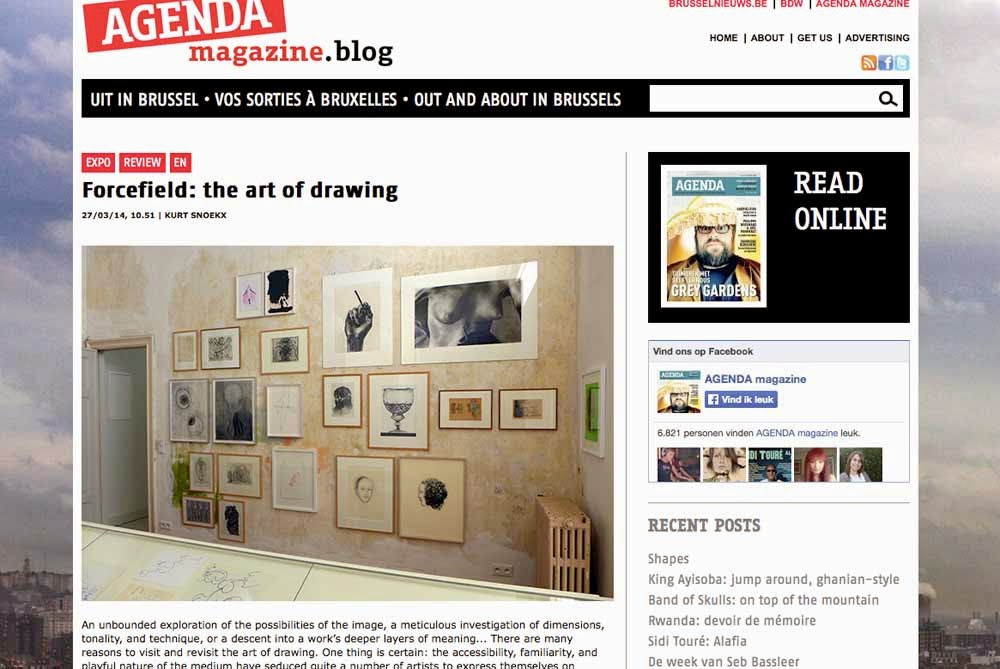Jan
Andriesse, lecture at the Institut de Carton, Brussels, 21 December 2013
The subject
matter of the painting by Torrentius is temperance. When I saw Jan's film
however I thought the issue was exuberance.
The
pleasure the narrator takes in telling the life story of Torrentius is obvious.
The grain of the voice, the rounded, sonorous way of pronouncing those
outrageous things. It is a story of rule-breaking, luxury, suffering,
resurrection, repeated downfall, oblivion and final, grotesque rediscovery. Be
it only for a lack of sufficient information, this painter's fate appears as an
exemplary human fate – or maybe just as fate – and his name seems significant:
Torrentius, the violent current. Is he the violent current himself or is he the
one who is caught in the current, thrown here and there and pulled away from
any firm ground? It is the narrator's pleasure to tell the story of a person of
exception, a person, one may imagine, who has faced the abyss – actually
neither the English nor the French language offer an appropriate word for the
German “Abgrund” or the Dutch “afgrond” or the Italian “sfondamento”: the sheer
lack of any ground, any base or support, any original and reliable level of
reference.
At first
the film is showing nothing or close to nothing. Or even more correctly: it is
showing complete darkness (or rather a darkness that is as complete as a video
projection allows). I want to remind you at this point that the philosopher
Giorgio Agamben has mentioned that darkness is not just an effect of the
absence of light, but a state of things that is perceived by activating
specific darkness receptors in the eye. You have to see darkness. Darkness
corresponding to a tiny spot at the centre of the painting of Torrentius fills
the screen to its edges and merges with the darkness of the projection room,
until the camera slowly starts to zoom out. It continues to zoom out until all
of the circular painting including its octagonal, black-brown and glossy frame
is seen to fill the screen. Soon after the start of the zooming a few bright
specks, a few grains of luminous dust can be noticed to interrupt the darkness.
Slowly slowly more spots manifest themselves... rather violently, unexpectedly
and seemingly out of place a larger bright shape intrudes. Different readings
are possible. The most compelling one refers to the universe, to light
traveling from stars that may have ceased to exist thousands of years ago,
disembodied light. Light on the edge of being lost in the overwhelming
darkness, making darkness darker, letting a vast emptiness emerge.
At one
point of the slow movement of the zoom that matches the relentless advancing of
the narration – that is what I seem to remember – at one point the typical
shape of a window's cross bar can be distinguished. The movement continues from
the universe to the space of a domestic interior. A smooth movement that covers
the most incredible distance between outside and inside. The passage from
inside to outside, from outside to inside: a specifically Dutch theme, Pieter
de Hooch. Finally the objects of the still life become identifiable, two
pitchers framing a glass, a bridle, two pipes turned down, a music score. Only
the allegoric subtext of the painting of Torrentius legitimizes this crazy
composition.
Visible are
the elements of a painting from the 17th century carved out by light
that enters from an unrevealed source – curved shiny surfaces collecting light
that otherwise would remain invisible. The presence of light illuminating
several objects that are crowding a domestic space however has obscured the
cosmic light sources. Now the light is brighter, the objects are exposing their
identity beyond doubt, but the origin of the light has been lost. More light,
more visibility, the increasing concreteness of objects create a continuous
growth of invisibility. One wishes in vain to return to the first moments of
nascent light and the initial punctuation of the bleak emptiness of the screen.
The filming
of the allegorical painting creates itself an allegorical condition. Including
a cosmic dimension it seems even richer and more challenging that the dimension
of the original allegory. Was this intended? Was Jan aware that he would
initiate such a revelation? Maybe not. Maybe revelation is here nothing but the
unintended effect of a mechanical practice. But he must have known or assumed
something. I guess that Jan was attracted to the analogy of the circular
painting to the shape and the function of the camera lens and ultimately the
human eye. Should one say that the movement of the zoom represents the opening
of the eye, the growth of the power of identification, the loss of the intimate
connection to cosmic space with its precarious illumination that has been our
home for ages on end – our lost home that one can maybe only remember when
facing the existential abyss?












































